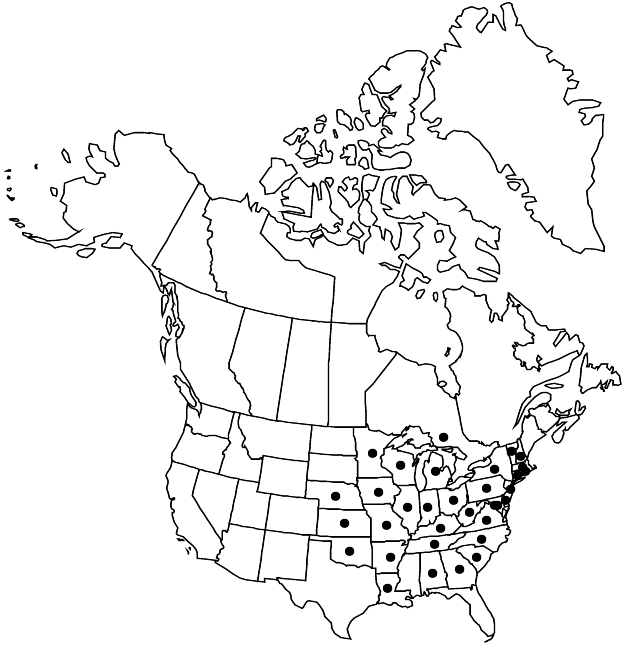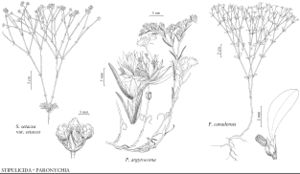Difference between revisions of "Paronychia canadensis"
Class-Book Bot. ed. s.n.(b), 262. 1861.
FNA>Volume Importer |
FNA>Volume Importer |
(No difference)
| |
Revision as of 22:36, 16 December 2019
Plants annual; taproot filiform to slender. Stems erect, dichotomously branched, 3–40 cm, ultimate branches filiform, glabrous. Leaves: stipules subulate to lanceolate, 0.5–4 mm, apex acuminate, entire; blade usually dotted or blotched, elliptic to obovate, 3–30 × 1–11 mm, herbaceous, apex acute to obtuse or cuspidate, glabrous. Cymes diffuse, flowers solitary (paired) in axils of leafy bracts. Flowers 5-merous, ± short-cylindric, with enlarged hypanthium and calyx cylindric, 0.9–1.3 mm, glabrous; sepals greenish to brownish, midrib and lateral pair of veins prominent, ovate to oblong, 0.5–1 mm, herbaceous, margins white to translucent, 0.03–0.1 mm wide, scarious, apex terminated by mucro, hood rounded-triangular, mucro triangular, 0.07–0.15 mm, glabrous; staminodes absent or indistinct; styles 2, 0.2–0.3 mm. Utricles ovoid to globose, ca. 0.5 mm, granular in distal 1/2, glabrous.
Phenology: Flowering spring–fall.
Habitat: Woodlands, thickets, fields, clearings, roadsides, waste places
Elevation: 0-1300 m
Distribution

Ont., Ala., Ark., Conn., Del., D.C., Ga., Ill., Ind., Iowa, Kans., Ky., La., Md., Mass., Mich., Minn., Mo., Nebr., N.H., N.J., N.Y., N.C., Ohio, Okla., Pa., R.I., S.C., Tenn., Vt., Va., W.Va., Wis.
Discussion
Selected References
None.
